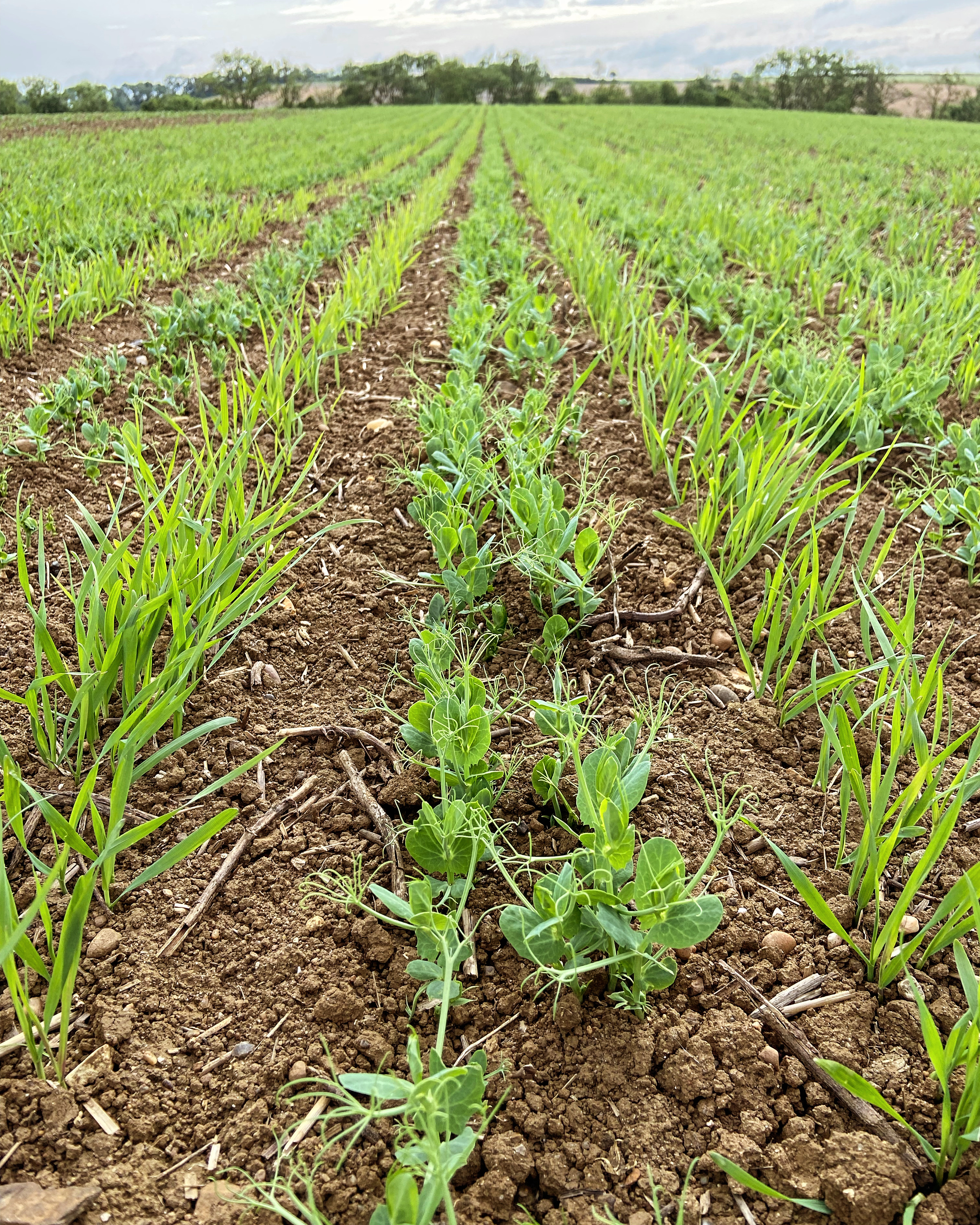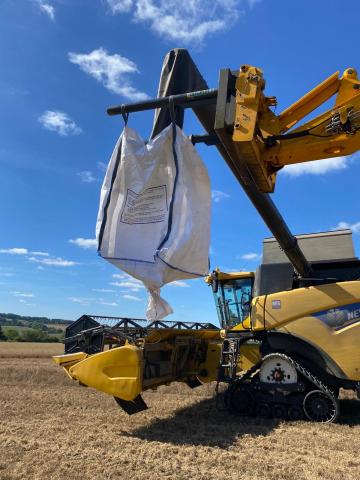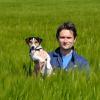The 2023-4 season has been incredibly challenging for farmers across the country, and especially those who have had to establish combinable crops and horticultural produce. Working with heavy silt/clay loam soils and some pretty rolling countryside, we have been no exception at the Allerton Project. After the wettest winter and spring on record (in which we received our entire average annual rainfall between mid-October and March) we were not in a position to plant spring crops until May, with our Pulse-PEP bicrop trials planted on 10th May into seedbeds which had seen multiple passes of a disced cultivator in order to allow them to dry, following the very late destruction of an overwinter cover crop consisting largely of phacelia.

The subsequent growing season was largely benign, however (though highly truncated) with the result that establishment and development were pleasingly straightforward. Our two trial fields consisted of pea/oat bicrop tramline plots alongside plots of straight oats, peas and field beans, all established with a Horsch Avatar disc drill (which enabled us to plant the bicrop simultaneously and in alternating rows thanks to the partitioned seed tank). We were perhaps luck that the peas avoided the attention of pigeons - perhaps aided by their proximity to other crops.
The plots gave us a fantastic demonstration opportunity through the growing season for the hundreds of visitors we hosted, to discuss both the project and its aims to produce more domestic protein (alongside reducing synthetic nitrogen use) but also for the concept of both bi- and strip cropping. There was certainly plenty of pleasing nodulation on the pea and bean roots to demonstrate the concept of nitrogen fixation to those unfamiliar with the concept. The beans did, however, disappoint through the season, as is to be expected given the very late drilling date. This obviously led to further issues such as weed ingress and soil degradation.
Harvest (17th September) was a challenge; the oats were fit for cutting some fortnight before the peas, which led to the obvious trade-off in crop quality and grain loss. Perhaps in more ideal growing conditions this might have been slightly different, but the climate does seem set to become consistently extreme and unreliable this century. The individual plots were harvested with a conventional harvester, yield mapped, and the bicrop plots were unloaded into grain bags to allow for more accurate weighing and easier cleaning and separating.
Analysis of the data collected through the season will hopefully show us some really interesting data from this first year of the project, which will become available in due course.







